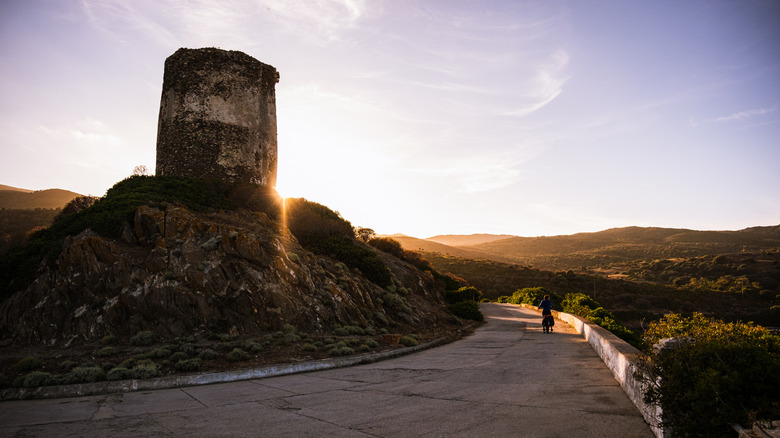Italy's Secret, Car-Free Island Escape Is An Uncrowded Idyll With Gorgeous Beaches And Trails
Mainland Italy is such a delight that the mind-boggling fact that the nation also comprises around 450 islands often goes under our radar, with cultural titans Florence, Rome, and Venice capturing our full attention as the destinations to prioritize. But venture further afield to Italy's islands to experience a slice of la dolce vita, getting the same culinary and cultural delights but at an easy-going pace. The nation's second largest island, Sardinia, is home to majestic beaches and unmatched food, and has one tiny neighboring island, a local secret: Asinara -– an idyllic, virtually uninhabited paradise off the north coast, with a fascinating story.
To discover car-free, uncrowded Asinara, the first step is to get to Sardinia. Off the western coast of Italy, it's surprisingly easy to reach from the mainland by sea or air -– there are three international airports to this large island (Alghero, Cagliari, and Olbia), plus ferries set sail to Sardinia from Naples, Rome, and Tuscany if you prefer to go by sea (or bring your own hire car).
Sardinia is huge, and its quaint beach towns get very busy in July and August – there's really no avoiding peak season anywhere in Italy. But basing yourself in fascinating Alghero, an ancient town in the north that's been a cultural crossroads for centuries, is a good spot to soak up the bustling vibrancy before sneaking off for a blissful escape on Asinara. As Asinara Island is a national park and marine protected area, it's highly recommended that you make your first visit with an official tour operator recommended by the park, who'll guide you on foot, by bicycle, or even in a small electric car across this verdant haven.
Asinara National Park's conservation and biodiversity
An island uninhabited by humans, where only donkeys, deer, goats and even the occasional pink flamingo roam free, Asinara Island (also known by its full title, Asinara National Park and the Marine Protected Area) is a rare gem. Formerly home to a prison (more on that later), it's now the focus of extensive conservation efforts across its three observatories. As one of the last untouched ecosystems in the western Mediterranean, its rare flora, fauna, and geology are flourishing thanks to the lack of development. This means visitors — whether eco-buffs or not — are treated to hiking trails and a coastline that remain very much as Mother Nature intended.
Asinara is blessed with stunning beaches and lapping, crystalline waters, some of which are closed to protect the resident turtles and other marine life, but a guide will make clear which areas are accessible. Even the shores open to the public are likely to be blissfully quiet, particularly if you visit during the shoulder seasons, spring or fall. If you do brave the hot summer months, remember to pack sunscreen and plenty of water, as shade is scarce on this grassy isle.
Whenever you go, pack hiking shoes or sturdy sandals and a snorkel if that's your thing -– your guide will let you know where swimming is allowed and where the best marine life can be spotted. If you're a real fan of solitude (and potential lack of cell phone reception) you can stay overnight on Asinara at a guest house in Cala d'Oliva.
A tiny isle with a gripping history
From farmers to mafia to donkeys, Asinara has a surprising amount of interesting history for a tiny, uninhabited island. Archeologists over the years have found remains of unique prehistoric houses, and evidence that the small isle was occupied by Phoenicians, Greeks, and Romans, with fleets in the Middle Ages using it as a base to attempt to invade Sardinia. It was the Ancient Romans who named it Sinuara, which later evolved into Asinara. More than a millennium later, in the 1700s, farming and fishing families from Liguria on the Italian mainland moved over and had a good run — but the roughly 500 villagers were forced off in 1885, when the King of Italy decided to develop it into a penal colony.
You can still see the prisons dotted across the island. They operated for more than a century and incarcerated high-profile mafia members, among other criminals, in the 1970s and 1980s. When the high security institution finally closed in 1997, the island became uninhabited again and was designated a national park, protecting it from development. If a visit to Asinara has inspired you to explore more secret island destinations in Italy, add the serene, secluded Palmarola to your list for future escapes.


